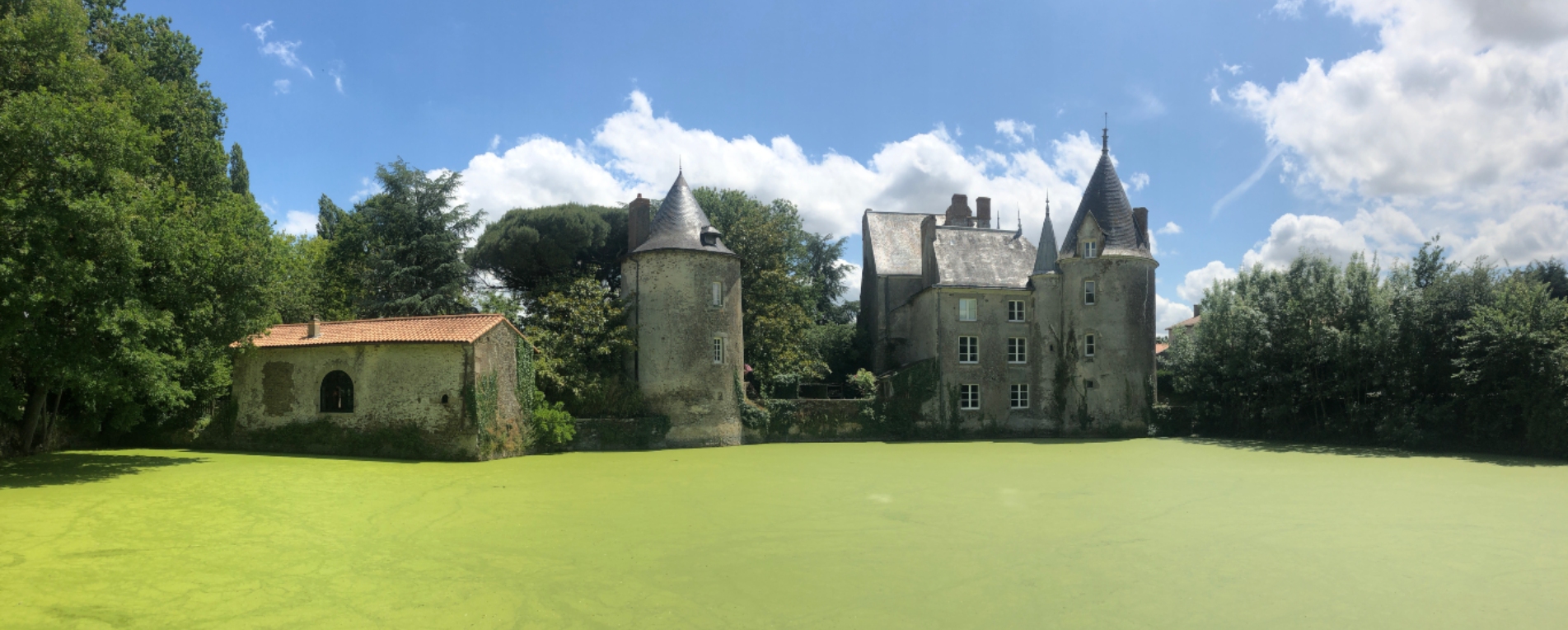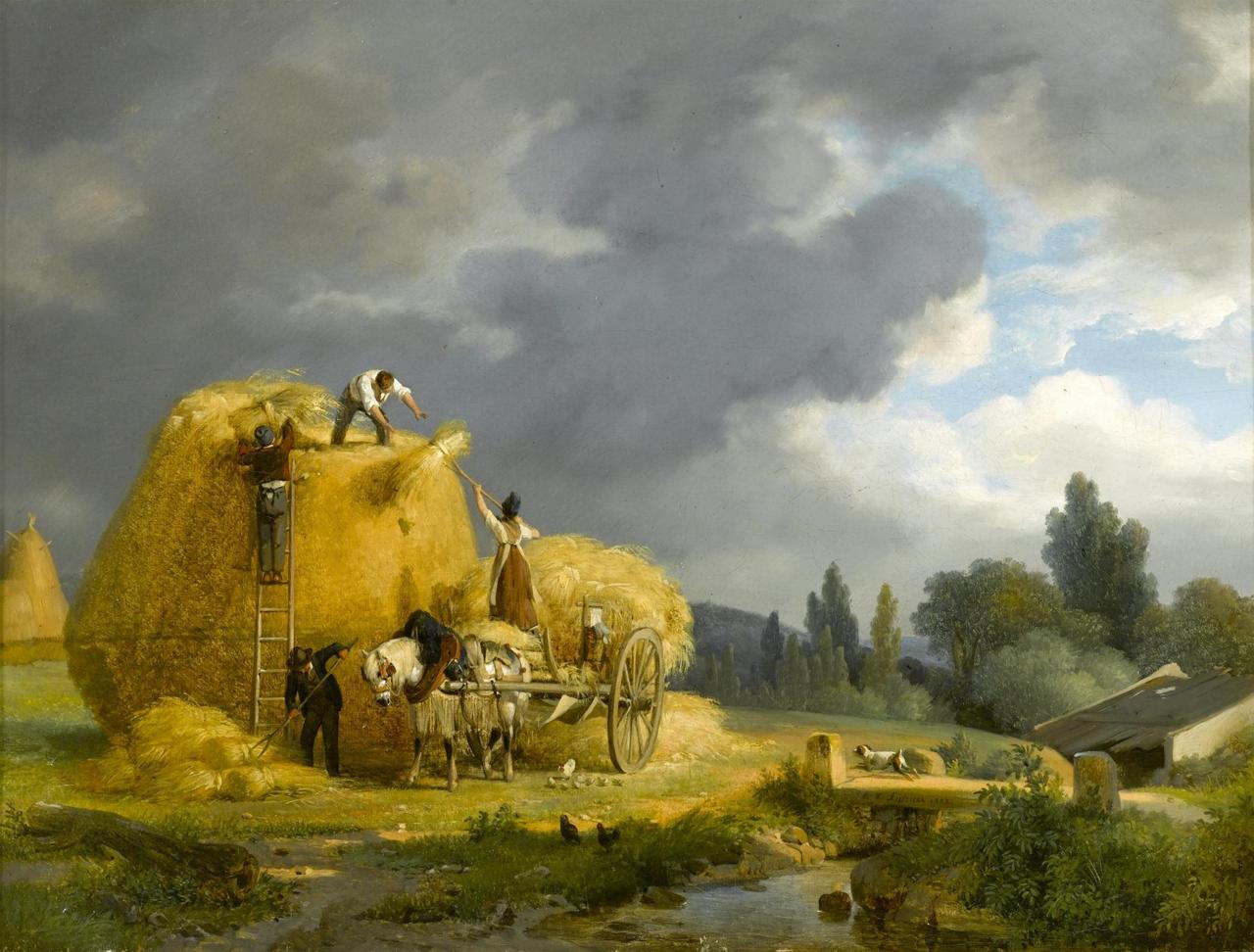|
Château De La Preuille
The Château de la Preuille is an 11th-century castle at Saint-Hilaire-de-Loulay, Vendée, France, one of the oldest ''châteaux'' in the Loire Valley. It took its present form in the 13th and 15th centuries. The wide moat defending the northern aspect of the walls and towers indicates its origins as a stronghold. From 1350, the castle was owned successively by the families of Boux, Bastard (1460), Gastiniere (1541), Pâris (including Claude-René Pâris de Soulanges, comte de Soulanges) (1728), and through the late 18th century, the family of D’Nacquart or De Nacquard. In 1832, Marie-Caroline of Bourbon, Duchess of Berry, visited the château to launch her coup against King Louis-Philippe in order to crown her son Henri, comte de Chambord Henri, Count of Chambord and Duke of Bordeaux (french: Henri Charles Ferdinand Marie Dieudonné d'Artois, duc de Bordeaux, comte de Chambord; 29 September 1820 – 24 August 1883) was disputedly King of France from 2 to 9 August ... [...More Info...] [...Related Items...] OR: [Wikipedia] [Google] [Baidu] |
Saint-Hilaire-de-Loulay
Saint-Hilaire-de-Loulay () is a former commune in the Vendée department in the Pays de la Loire region in western France. On 1 January 2019, it was merged into the new commune Montaigu-Vendée. Monuments The Château de la Preuille, one of the oldest castles in the Loire region, is located here. Restaurant naming Saint-Hilaire-de-Loulay is the home town of Thierry Rautureau. His restaurant "Loulay" is named to reflect his home town. See also *Communes of the Vendée department The following is a list of the 257 communes of the Vendée department of France. The communes cooperate in the following intercommunalities (as of 2022):Former communes of Vendée [...More Info...] [...Related Items...] OR: [Wikipedia] [Google] [Baidu] |
Vendée
Vendée (; br, Vande) is a department in the Pays de la Loire region in Western France, on the Atlantic coast. In 2019, it had a population of 685,442.Populations légales 2019: 85 Vendée INSEE Its prefecture is . History The area today called the Vendée was originally known as the ''Bas-Poitou'' and is part of the former province of . In the southeast corner, the village of |
Château
A château (; plural: châteaux) is a manor house or residence of the lord of the manor, or a fine country house of nobility or gentry, with or without fortifications, originally, and still most frequently, in French-speaking regions. Nowadays a ''château'' may be any stately residence built in a French style; the term is additionally often used for a winegrower's estate, especially in the Bordeaux region of France. Definition The word château is a French word that has entered the English language, where its meaning is more specific than it is in French. The French word ''château'' denotes buildings as diverse as a medieval fortress, a Renaissance palace and a fine 19th-century country house. Care should therefore be taken when translating the French word ''château'' into English, noting the nature of the building in question. Most French châteaux are "palaces" or fine "country houses" rather than "castles", and for these, the word "château" is appropriate in English. ... [...More Info...] [...Related Items...] OR: [Wikipedia] [Google] [Baidu] |
Claude-René Pâris De Soulanges
Claude-René Pâris de Soulanges (; 18 August 1736 - 31 July 1795) was a French aristocrat and naval officer. He was lord of Preuille and the last count of Soulanges. Family He was descended from the family of the lords of Soulanges, a fiefdom near Ancenis in the diocese of Nantes in Brittany. The Pâris family originated either in England or the Flanders plain and gave its name to a château in Basse-Bretagne. Claude-René was born in the château de la Preuille, Saint-Hilaire-de-Loulay, Vendée (département), Vendée, the eldest son of Claude-Louis Pâris, knight and lord of Soulanges, and his wife, Françoise de Gatinaire, daughter of Claude de Gatinaire, lord of Gatinaire and Preville, and Marguerite Merisson. His parents had married on 28 May 1728 at the Saint-Hilaire-de-Loulay, château de la Preuille. Claude-René's brother-in-law was count Charles Jean d'Hector (1722-1808), the pre-revolutionary commander of the French naval force at Brest, France, Brest. Life Seven Y ... [...More Info...] [...Related Items...] OR: [Wikipedia] [Google] [Baidu] |
Marie-Caroline Of Bourbon-Two Sicilies, Duchess Of Berry
french: Marie Caroline Ferdinande Louise , house = Bourbon-Two Sicilies , father = Francis I of the Two Sicilies , mother = Archduchess Maria Clementina of Austria , religion = Roman Catholicism , signature = Italian signature of Maria Carolina, Duchess of Berry in 1861.png Marie-Caroline of Bourbon-Two Sicilies, Duchess of Berry (Maria Carolina Ferdinanda Luise; 5 November 1798 – 16 April 1870) was an Italian princess of the House of Bourbon who married into the French royal family, and was the mother of Henri, Count of Chambord. Life Caroline was born at Caserta Palace in Naples. She was the eldest child of Prince Francesco, the future King Francis I of the Two Sicilies and his first wife, Archduchess Maria Clementina of Austria, the tenth child and third daughter of Leopold II, Holy Roman Emperor and Maria Luisa of Spain. Her parents were double first cousins. Caroline was baptised with the names of her paternal grandparents, Maria Carolina of Austria and King Ferdin ... [...More Info...] [...Related Items...] OR: [Wikipedia] [Google] [Baidu] |
King Louis-Philippe
Louis Philippe (6 October 1773 – 26 August 1850) was King of the French from 1830 to 1848, and the penultimate monarch of France. As Louis Philippe, Duke of Chartres, he distinguished himself commanding troops during the Revolutionary Wars and was promoted to lieutenant general by the age of nineteen, but he broke with the Republic over its decision to execute King Louis XVI. He fled to Switzerland in 1793 after being connected with a plot to restore France's monarchy. His father Louis Philippe II, Duke of Orléans (Philippe Égalité) fell under suspicion and was executed during the Reign of Terror. Louis Philippe remained in exile for 21 years until the Bourbon Restoration. He was proclaimed king in 1830 after his cousin Charles X was forced to abdicate by the July Revolution (and because of the Spanish renounciation). The reign of Louis Philippe is known as the July Monarchy and was dominated by wealthy industrialists and bankers. He followed conservative policies, e ... [...More Info...] [...Related Items...] OR: [Wikipedia] [Google] [Baidu] |
Comte De Chambord
Henri, Count of Chambord and Duke of Bordeaux (french: Henri Charles Ferdinand Marie Dieudonné d'Artois, duc de Bordeaux, comte de Chambord; 29 September 1820 – 24 August 1883) was disputedly King of France from 2 to 9 August 1830 as Henry V, although he was never officially proclaimed as such. Afterwards, he was the Legitimist pretender to the throne of France from 1844 until his death in 1883. Henri was the only son of Charles Ferdinand, Duke of Berry, born after his father's death, by his wife, Princess Carolina of Naples and Sicily, daughter of King Francis I of the Two Sicilies. The Duke himself was the younger son of Charles X of France. As the grandson of Charles X, Henri was a . He was the last legitimate descendant of Louis XV of France in the male line. Early life Henri d'Artois was born on 29 September 1820, in the Pavillon de Marsan, a portion of the Tuileries Palace that still survives in the compound of the Louvre Palace in Paris. His father, the ''duc d ... [...More Info...] [...Related Items...] OR: [Wikipedia] [Google] [Baidu] |
11th-century Establishments In France
The 11th century is the period from 1001 ( MI) through 1100 ( MC) in accordance with the Julian calendar, and the 1st century of the 2nd millennium. In the history of Europe, this period is considered the early part of the High Middle Ages. There was, after a brief ascendancy, a sudden decline of Byzantine power and a rise of Norman domination over much of Europe, along with the prominent role in Europe of notably influential popes. Christendom experienced a formal schism in this century which had been developing over previous centuries between the Latin West and Byzantine East, causing a split in its two largest denominations to this day: Roman Catholicism and Eastern Orthodoxy. In Song dynasty China and the classical Islamic world, this century marked the high point for both classical Chinese civilization, science and technology, and classical Islamic science, philosophy, technology and literature. Rival political factions at the Song dynasty court created strife amongs ... [...More Info...] [...Related Items...] OR: [Wikipedia] [Google] [Baidu] |
11th-century Fortifications
The 11th century is the period from 1001 ( MI) through 1100 ( MC) in accordance with the Julian calendar, and the 1st century of the 2nd millennium. In the history of Europe, this period is considered the early part of the High Middle Ages. There was, after a brief ascendancy, a sudden decline of Byzantine power and a rise of Norman domination over much of Europe, along with the prominent role in Europe of notably influential popes. Christendom experienced a formal schism in this century which had been developing over previous centuries between the Latin West and Byzantine East, causing a split in its two largest denominations to this day: Roman Catholicism and Eastern Orthodoxy. In Song dynasty China and the classical Islamic world, this century marked the high point for both classical Chinese civilization, science and technology, and classical Islamic science, philosophy, technology and literature. Rival political factions at the Song dynasty court created strife amongs ... [...More Info...] [...Related Items...] OR: [Wikipedia] [Google] [Baidu] |
Châteaux Of The Loire Valley
The châteaux of the Loire Valley (french: châteaux de la Loire) are part of the architectural heritage of the historic towns of Amboise, Angers, Blois, Chinon, Montsoreau, Orléans, Saumur, and Tours along the river Loire in France. They illustrate Renaissance ideals of design in France. The châteaux of the Loire Valley number over three hundred, ranging from practical fortified castles from the 10th century to splendid residences built half a millennium later. When the French kings began constructing their huge châteaux in the Loire Valley, the nobility, drawn to the seat of power, followed suit, attracting the finest architects and landscape designers. The châteaux and their surrounding gardens are cultural monuments which embody the ideals of the Renaissance and Enlightenment. Many of the châteaux were built on hilltops, such as the Château d'Amboise, while the only one built in the riverbed is the Château de Montsoreau. Many had exquisite churches on the grounds or wi ... [...More Info...] [...Related Items...] OR: [Wikipedia] [Google] [Baidu] |




